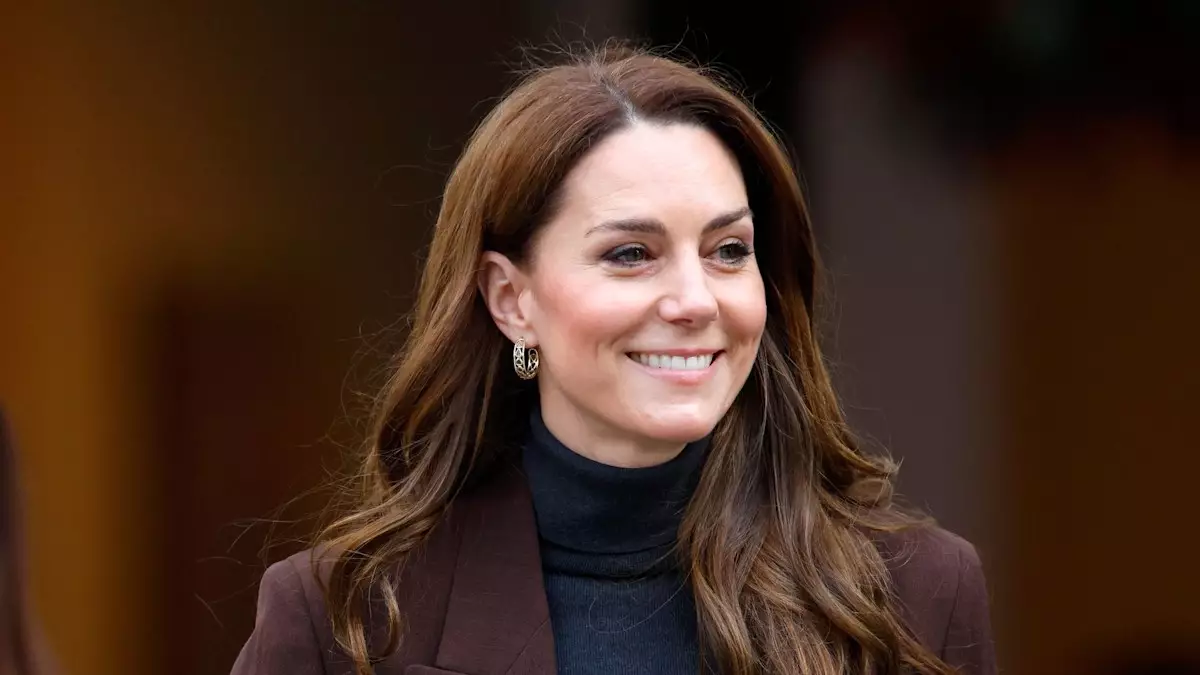The Princess of Wales, Kate Middleton, has long been a figure of interest not only for her royal duties but also for her notable fashion choices. Recently, however, the focus has shifted from her outfits to a more significant initiative: her Shaping Us Framework aimed at enhancing the nation’s social and emotional skills. During her latest public appearance at the National Portrait Gallery, the Princess opted for a deliberately understated outfit which many have scrutinized, illustrating the challenge of balancing royal image with personal style.
Kate’s choice to wear a brown tailored jacket designed by Petar Petrov, paired with a dark turtleneck and wide-legged pinstripe trousers from Max Mara, marks her first public engagement since Kensington Palace announced a policy change regarding the disclosure of her outfits. While traditionally, royal appearances would be accompanied by detailed reports on their fashion, the recent move suggests a shift in narrative. According to fashion experts, Kate’s outfit was not merely about simplicity but showcased her keen eye for quality and timeless style—elements that are pivotal to her identity as the Princess of Wales.
Petar Petrov, a designer with roots in Ukraine, is known for his precise tailoring and clean lines, qualities that resonate with the Princess’s usual aesthetic. The layers of her outfit evoked a sense of sophistication, expertly blurring the lines between formal wear and everyday attire. The significance of this choice cannot be understated in a world where the judgment of a public figure’s fashion choices can often overshadow the causes they represent.
Despite her sartorial elegance, the policy of withholding details about Kate’s fashion choices has drawn criticism. The creator of the Royal Fashion Police Instagram account remarked on the irony of the situation—despite attempts to divert the public’s focus away from her clothing, her choice of an Austrian brand and an Italian label has sparked even more conversation among royal fashion fans. This peculiar twist presents a unique juxtaposition for Kate as she tries to channel attention towards the initiatives she is passionate about.
The decision to wear international labels, particularly when Kate has been known as a champion of British designers, raises questions about the messaging behind her wardrobe selections. While her understated look aimed to convey a commitment to the issues at hand, it inadvertently highlighted the complexities attached to royalty and fashion. The conversation about her outfit shifted from admiration to analysis, proving that every choice made by the royal family is subject to scrutiny.
Kate’s gradual return to public life represents not just physical recovery from her health battles, but a recalibration of her role within the royal framework. Surviving cancer treatment and emerging in remission signifies her strength, emblematic of more than just a royal presence—it denotes resilience. The intersection of her personal journey with her public duties adds an enriching layer to her engagements. This is particularly poignant as she delves into initiatives that encourage societal well-being, a personal cause that transcends mere glamour.
During her appearance last Tuesday, the Princess’s understated fashion offered more than just aesthetic appeal; it carried undertones of permanence and depth in her approach to public service. As the nation looks towards her, hoping for leadership in social and emotional resilience, so too does it regard her fashion choices as a narrative of strength, if not a subtle reminder of the changing tides within the royal household.
In a world where royals are often critiqued for their fashion choices, Kate Middleton is navigating an intricate path of representation—both personal and institutional. Her latest public appearance served as a reminder that while her garb may be of interest, it is the causes she represents that should emerge at the forefront. As royal protocols evolve, she must balance the expectation of being a fashion icon with her aspirations to be a force for social change, challenging the public to rethink how they regard royalty in the modern era.

